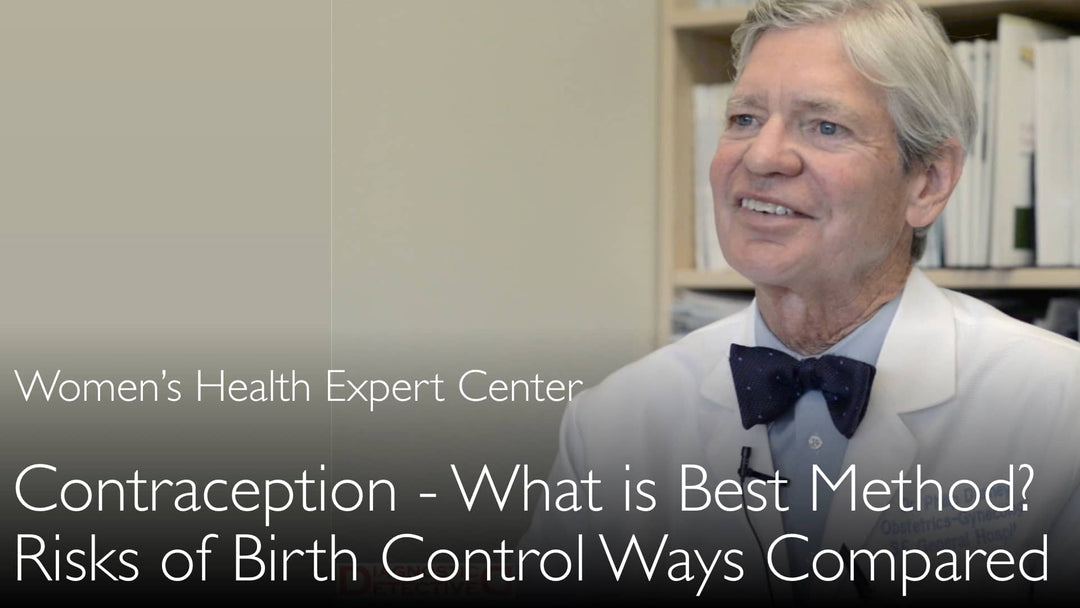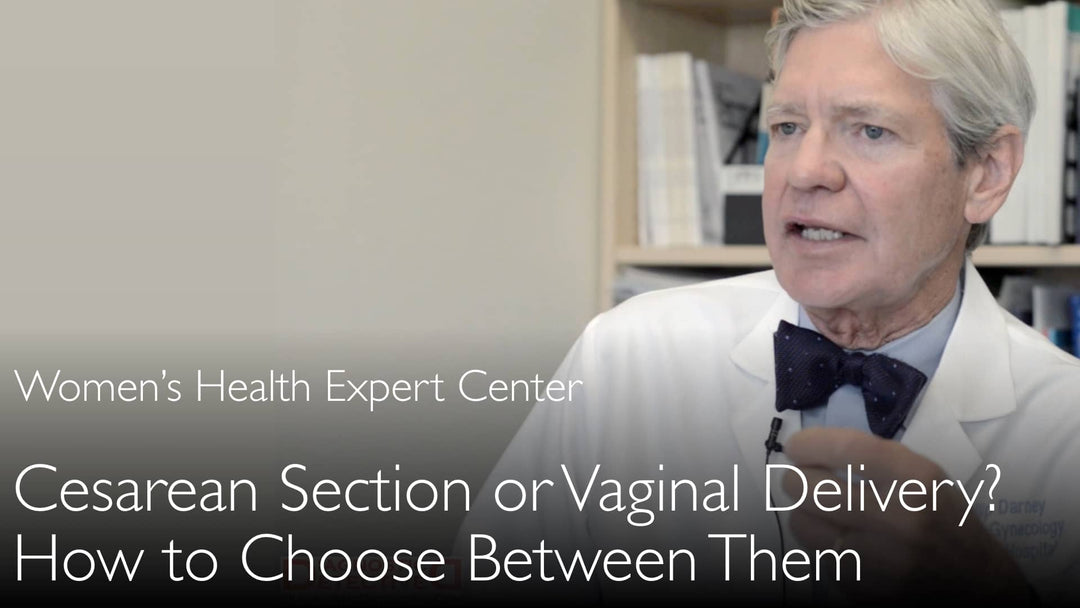Leading expert in reproductive medicine and fertility treatment, Dr. Heather Huddleston, MD, explains the common causes and highly effective treatments for unexplained infertility, a diagnosis given when standard testing fails to identify a specific reason a couple cannot conceive. She details how age impacts fertility, the multifactorial nature of many cases, and the success rates of interventions like intrauterine insemination (IUI) and in vitro fertilization (IVF), emphasizing that a medical second opinion can confirm the diagnosis and optimize the treatment plan for the best chance of success.
Diagnosis and Treatment Options for Unexplained Infertility
Jump To Section
- Common Causes of Infertility by Age
- What is Unexplained Infertility?
- Potential Hidden Causes of Unexplained Infertility
- The Impact of Female Age on Fertility
- Effective Treatment Options for Unexplained Infertility
- Success Rates and Prognosis
- The Role of a Medical Second Opinion
Common Causes of Infertility by Age
Infertility causes vary significantly across different age groups. Dr. Heather Huddleston, MD, outlines that for patients under 35, a male factor is a primary cause in 20% to 40% of cases. Problems with the Fallopian tubes, such as a blockage, account for another 20% to 30% of infertility diagnoses in younger women. Ovulatory dysfunction is responsible for approximately 20% of cases.
The remaining cases in this younger demographic are often classified as unexplained infertility. This means a clear, single cause cannot be identified through standard diagnostic testing.
What is Unexplained Infertility?
Unexplained infertility is a clinical diagnosis given to couples who have been unable to conceive despite having normal results on basic fertility evaluations. According to Dr. Heather Huddleston, MD, this means testing has confirmed a normal semen analysis, open Fallopian tubes, a normal uterine environment, and regular ovulation.
This diagnosis can be incredibly frustrating for couples, as they desire a tangible reason for their struggle to conceive. However, Dr. Heather Huddleston, MD, emphasizes that the label "unexplained" does not mean "untreatable." In fact, it is often a very treatable condition.
Potential Hidden Causes of Unexplained Infertility
While a specific cause may not be identified, reproductive experts like Dr. Heather Huddleston, MD, believe many cases are multifactorial. This means several subtle issues may be combining to reduce fertility. Potential hidden causes include minor sperm dysfunction that isn't detected on a standard analysis, making it difficult for sperm to reach or fertilize the egg.
Other factors could include issues with sperm transport through the cervix or problems with the egg's zona pellucida preventing sperm penetration. In older women, the primary contributing factor is often a decline in egg quality, which is a functional issue not detected by standard tests that only assess quantity and ovulation timing.
The Impact of Female Age on Fertility
Female age is one of the most significant factors affecting fertility. Dr. Heather Huddleston, MD, explains that as women get older, particularly after 35, their eggs accumulate genetic abnormalities. Each month, the ovulated egg has a higher chance of being genetically flawed, making it less capable of achieving fertilization, implantation, or developing into a healthy pregnancy.
This age-related decline in egg quality means that even if all standard tests are normal, the monthly probability of conception is lower. For women over 35, age itself can be the underlying reason for a diagnosis of unexplained infertility.
Effective Treatment Options for Unexplained Infertility
Fortunately, several effective treatment pathways exist for unexplained infertility. Dr. Heather Huddleston, MD, describes the three main approaches. The first is ovulation induction with medications like clomiphene citrate (Clomid) to stimulate the release of more than one egg, increasing the chances of conception.
The second option is intrauterine insemination (IUI), often combined with ovulation-inducing medications. This procedure places washed, concentrated sperm directly into the uterus around the time of ovulation, bypassing potential cervical issues. The third and most advanced option is in vitro fertilization (IVF), which involves fertilizing eggs with sperm in a laboratory and then transferring resulting embryos into the uterus.
Success Rates and Prognosis
The prognosis for couples with unexplained infertility is generally positive, especially with treatment. Dr. Heather Huddleston, MD, provides an encouraging statistic, estimating that up to 70% of women under the age of 40 can be successfully treated for unexplained infertility.
Success rates are highest for younger women but remain significant for women in their late 30s. The choice of treatment—whether IUI, IVF, or medication—depends on the couple's specific situation, duration of infertility, and the female partner's age. Dr. Anton Titov, MD, notes that accessing these treatments is key to achieving a successful pregnancy.
The Role of a Medical Second Opinion
Seeking a medical second opinion is highly recommended for unexplained infertility. A consultation with another specialist, such as Dr. Heather Huddleston, MD, can confirm that the initial diagnosis is correct and that all necessary testing has been completed. It provides reassurance that no obvious cause was missed.
Furthermore, a second opinion is invaluable for reviewing the proposed treatment plan. A different fertility expert can offer insights into whether interventions like IUI or IVF are the most appropriate next steps, potentially optimizing the path to pregnancy. Dr. Anton Titov, MD, concludes that a second opinion empowers couples to move forward with confidence in their chosen treatment strategy.
Full Transcript
Unexplained infertility treatment can overcome problems with conceiving a child. Unexplained infertility is a large and frustrating type of fertility problem.
What are common causes of unexplained infertility? A leading fertility expert discusses the best therapy for unexplained infertility treatment.
Unexplained infertility treatments include intrauterine insemination, in vitro fertilization, and medications to boost ovulation.
Dr. Anton Titov, MD: A medical second opinion in unexplained infertility helps to pinpoint the exact cause.
Dr. Heather Huddleston, MD: Causes of unexplained infertility are usually multifactorial. Frequent causes of infertility by age are blockage of fallopian tubes, male factor infertility, and problems with ovulation. In many cases, the cause of unexplained infertility cannot be identified.
Treatment by IVF, ICSI, or intrauterine insemination is effective in many situations of unexplained infertility. Getting a medical second opinion is recommended.
A video interview with a leading expert in fertility treatment and reproductive medicine. A medical second opinion confirms that the unexplained infertility diagnosis is correct and complete. It also confirms that unexplained infertility treatment is required.
A medical second opinion helps to choose the best unexplained infertility treatment.
Dr. Anton Titov, MD: Get a medical second opinion on unexplained infertility and be confident that your treatment is the best.
Dr. Heather Huddleston, MD: Unexplained infertility treatment can be successfully overcome by many couples.
Unexplained infertility treatment. Online medical second opinion on infertility. Infertility is a very big topic, especially in industrialized countries. Fertility rates are declining. Women are taking their time to have their first child or more children.
Infertility is a hot topic, especially today.
Dr. Anton Titov, MD: What are the most common causes of infertility? What are causes of infertility by age group? There are probably different causes of infertility for people in 20 to 30, 30 to 40, and older than 40 age brackets.
Online medical second opinion on infertility.
Dr. Heather Huddleston, MD: For the younger patients (20 to 35 years of age), infertility causes in 20% to 40% of situations are linked to a male factor. Then 20% to 30% of infertility causes in the younger group involve problems with the Fallopian tubes. It could be, for example, a blocked Fallopian tube.
Ovulatory dysfunction is a cause of infertility in about 20%. The remaining infertility cases are generally unexplained infertility. This means that unfortunately we are not able to put our finger on exactly what is the problem.
Many unexplained infertility cases are multifactorial. There is a little bit of male infertility factor and a little bit of ovulatory dysfunction. These causes of infertility may be combining. They are contributing to make it more difficult to get pregnant.
As women get older than 35, age is a very big factor in inability to get pregnant. There may be other contributing factors. Contributing factors to infertility for older women are the same as for the younger women. They are blocked fallopian tubes and ovulatory dysfunction.
But the impact of older age makes it much more difficult to get pregnant. The reason is this. As women get older, women's eggs become flawed from a genetic standpoint. Release of a genetically damaged egg during ovulation does not lead to pregnancy.
Increased genetic defects in eggs means that on any given month women have a lower chance of getting pregnant. Because the egg that is released during ovulation may just not be fit to create a pregnancy.
Online medical second opinion on infertility.
Dr. Anton Titov, MD: There is a term "unexplained infertility". What does unexplained infertility mean? What are causes of unexplained infertility upon a detailed diagnostic examination?
Online medical second opinion on infertility.
Dr. Heather Huddleston, MD: Unfortunately we don't always know what causes unexplained infertility. We are often not able to discover the exact cause of unexplained infertility. There are certain problems we can test for. We can test a male partner. He may have abnormal semen analysis (spermogram).
We can test if the fallopian tubes are blocked. We can see if the uterine environment is normal. We can see if a woman is ovulating every month. Ovulatory dysfunction may be present.
All these things could be normal. But the couple could still be having trouble getting pregnant. Many of unexplained infertility causes may have to do with the sperm not being able to get to the egg. Sperm might have a problem to get through the cervix.
Maybe the egg isn't allowing the sperm to get into the egg (oocyte). There are so many different possibilities that cause infertility. Probably for every case of unexplained infertility there are multiple contributing factors.
In women older than 35, age could be a problem. The impact of age could be the cause of "unexplained infertility". So older age of woman makes it more difficult to get pregnant. We are not able to discover where and how the problem of infertility is happening.
The overall quality of egg (ovum) might simply not be good enough for pregnancy.
Diagnosis of unexplained infertility is very frustrating for couples. They don't like having unexplained infertility. It's much easier in some ways to have a specific diagnosis. It is better to have a tangible diagnosis that you understand.
But the good news is that unexplained infertility is very treatable. We find that women particularly in their 30’s are able to be treated successfully. Even women in late 30’s can be treated successfully for unexplained infertility.
Unexplained infertility treatments include intrauterine insemination, medications to boost ovulation, or IVF (in vitro fertilization). Medications are, for example, Clomid / clomiphene citrate.
Online medical second opinion on infertility.
Dr. Anton Titov, MD: Are those three methods to treat unexplained infertility effective?
Online medical second opinion on infertility.
Dr. Heather Huddleston, MD: Yes, they are effective in most of the infertility cases. Sometimes patients are able to have infertility treatment with intrauterine insemination or ovulation stimulation. If patients are not constrained financially from being able to access infertility treatments, then therapy of unexplained infertility is successful.
We estimate that even 70% of women under 40 years of age can be treated successfully for unexplained infertility.
Dr. Anton Titov, MD: Unexplained infertility treatment. Video interview with leading fertility expert. Causes of infertility are: male factors, ovulation problems, fallopian tubes blockage, uterine problems.






